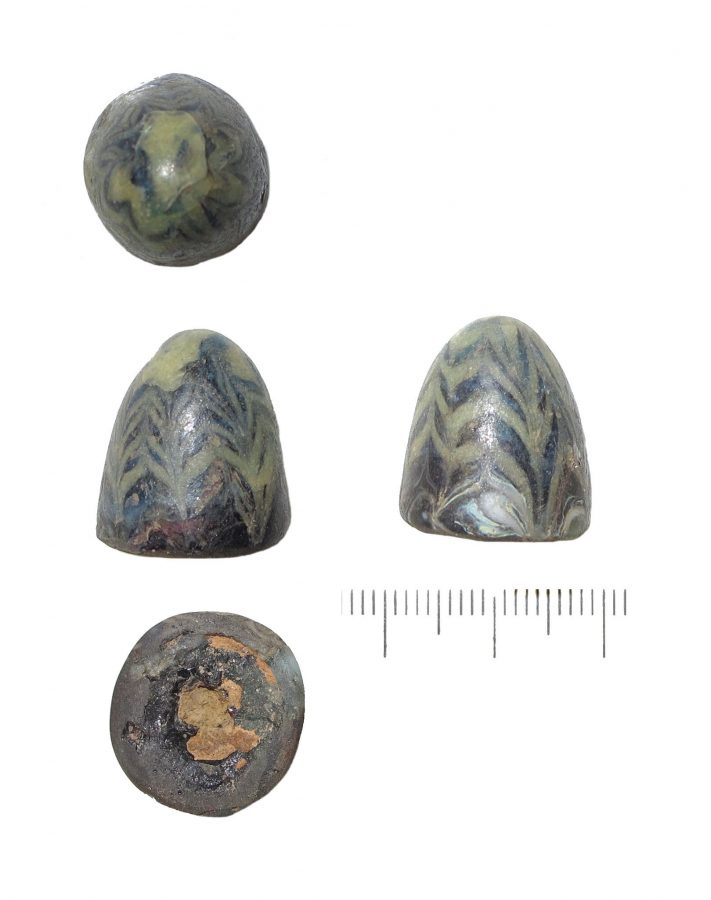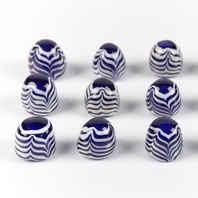
Description
Glass Gaming Piece (LIN-C31CD7)
Conical bi-chrome glass gaming piece found in East Lindsey, Lincolnshire
There are different possible interpretations of this Lincolnshire find from 2012. It could be a playing-piece as interpreted in the reproductions. Anglo-Saxon playing-pieces of shaped animal tooth are of similar dimensions, while glass counters were used both in the Roman period and taller glass playing men in the Viking period. This find is however considered by some archaeologists more likely to be a decorative setting from fine metalwork. The rather muddy glass colours suggest that the glasses used had already been recycled, and the clay core indicates careful use of a precious resource as well as a means of moulding on a decorated sheet of glass. The best parallels for this find, though none matches the form, are the oval cabochon pieces of dark blue and opaque white glass from the Anglo-Saxon monastery at Monkwearmouth, County Durham. Prominent coloured glass inlays are a part of the Insular tradition with its roots in Ireland. In Irish work the emphasis is on contrasting coloured zones and inlays, technically more complex and in a diverging tradition from this new find, though imitated elsewhere in English work.
Object Type
- Gaming piece
Date
- circa 750 — 899
Ascribed Culture
Original/Reproduction
- Original
Material
Collection
- Viking Objects
Current Location
- Private Ownership
Keywords
- Anglo-Saxon, decorative, entertainment, gaming_piece, glass, hnefatafl, Irish, leisure, Lincolnshire, Nine_Men's_Morris, Portable_Antiquities_Scheme
Further information
You can see the original at Private Ownership.
Acknowledgements
(c) Portable Antiquities Scheme, CC BY-SA 4.0
References
R. Cramp (2005), Wearmouth and Jarrow Monastic Sites, Vol 1. Swindon: English Heritage.
R. Cramp (2006), ‘Bangles, beads and glass objects’, Wearmouth and Jarrow Monastic Sites, Vol. 2, Swindon: English Heritage I, pp. 258-67.

